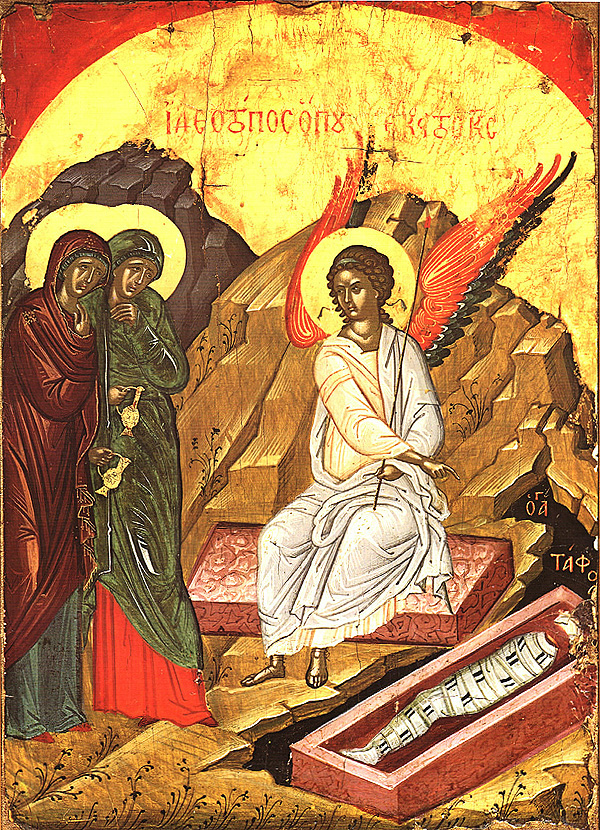 Great and Holy Saturday is the day on which Christ reposed in the tomb.
Great and Holy Saturday is the day on which Christ reposed in the tomb.
The Church calls this day the Blessed Sabbath. The great Moses mystically foreshadowed this day when he said:
God blessed the seventh day.
This is the blessed Sabbath.
This is the day of rest,
on which the only-begotten Son of God rested from all His works . . . .
(Vesperal Liturgy of Holy Saturday)
By using this title the Church links Holy Saturday with the creative act of God. In the initial account of creation as found in the Book of Genesis, God made man in His own image and likeness. To be truly himself, man was to live in constant communion with the source and dynamic power of that image: God. Man fell from God. Now Christ, the Son of God through whom all things were created, has come to restore man to communion with God. He thereby completes creation. All things are again as they should be. His mission is consummated. On the Blessed Sabbath He rests from all His works.
THE TRANSITION
Holy Saturday is a neglected day in parish life. Few people attend the Services. Popular piety usually reduces Holy Week to one day — Holy Friday. This day is quickly replaced by another — Easter Sunday. Christ is dead and then suddenly alive. Great sorrow is suddenly replaced by great joy. In such a scheme Holy Saturday is lost.
In the understanding of the Church, sorrow is not replaced by joy; it is transformed into joy. This distinction indicates that it is precisely within death the Christ continues to effect triumph.
TRAMPLING DOWN DEATH BY DEATH
We sing that Christ is “. . . trampling down death by death” in the troparion of Easter. This phrase gives great meaning to Holy Saturday. Christ’s repose in the tomb is an “active” repose. He comes in search of His fallen friend, Adam, who represents all men. Not finding him on earth, He descends to the realm of death, known as Hades in the Old Testament. There He finds him and brings him life once again. This is the victory: the dead are given life. The tomb is no longer a forsaken, lifeless place. By His death Christ tramples down death.
THE ICON OF THE DESCENT INTO HADES
The traditional icon used by the Church on the feast of Easter is an icon of Holy Saturday: the descent of Christ into Hades. It is a painting of theology, for no one has ever seen this event. It depicts Christ, radiant in hues of white and blue, standing on the shattered gates of Hades. With arms outstretched He is joining hands with Adam and all the other Old Testament righteous whom He has found there. He leads them from the kingdom of death. By His death He tramples death.
Today Hades cries out groaning:
“I should not have accepted the Man born of Mary.
“He came and destroyed my power.
“He shattered the gates of brass.
“As God, He raised the souls I had held captive.”
Glory to Thy cross and resurrection, O Lord!
(Vesperal Liturgy of Holy Saturday)
THE VESPERAL LITURGY
The Vespers of Holy Saturday inaugurates the Paschal celebration, for the liturgical cycle of the day always begins in the evening. In the past, this service constituted the first part of the great Paschal vigil during which the catechumens were baptized in the “baptisterion” and led in procession back into the church for participation in their first Divine Liturgy, the Paschal Eucharist. Later, with the number of catechumens increasing, the first baptismal part of the Paschal celebration was disconnected from the liturgy of the Paschal night and formed our pre-paschal service: Vespers and the Divine Liturgy of St. Basil the Great which follows it. It still keeps all the marks of the early celebration of Pascha as baptismal feast and that of Baptism as Paschal sacrament (death and resurrection with Jesus Christ — Romans 6).